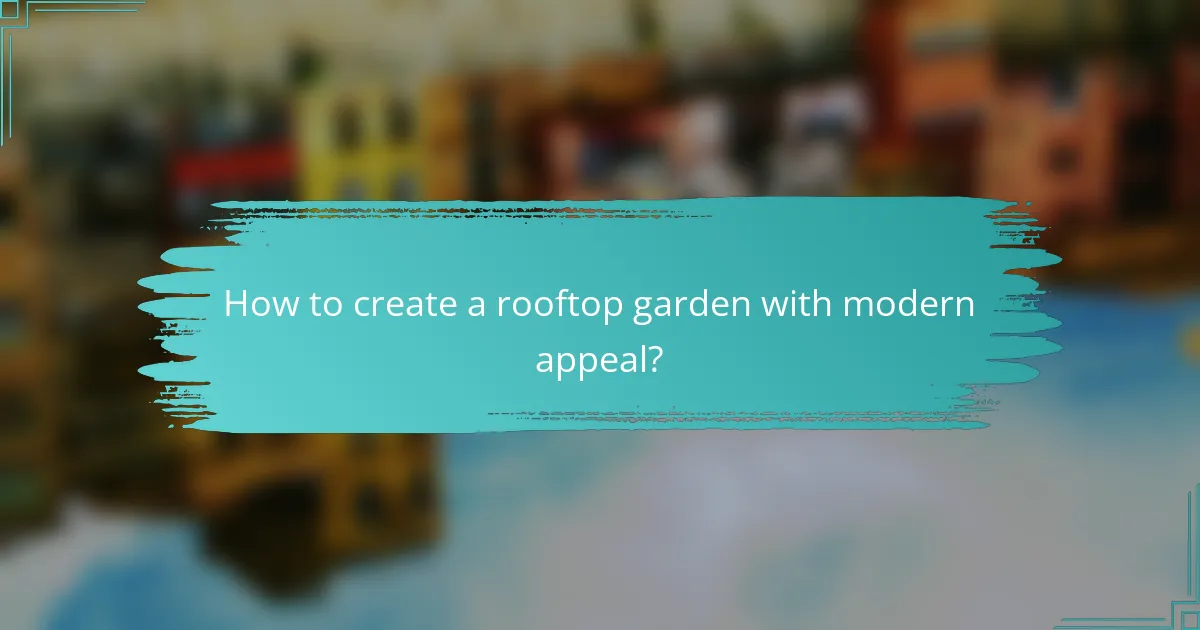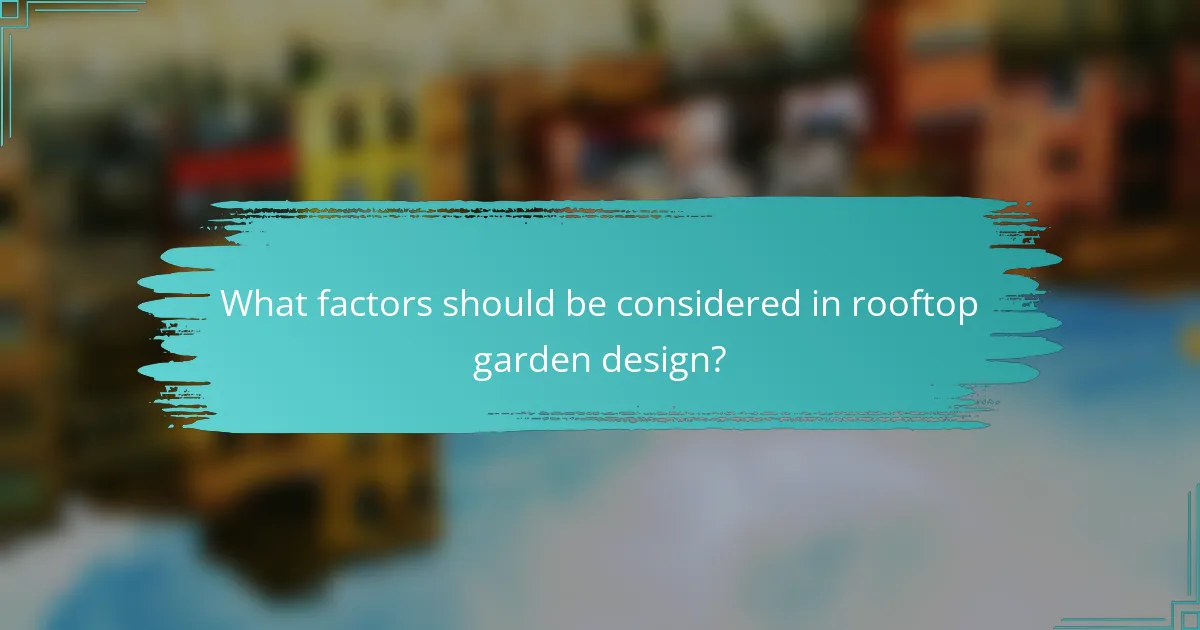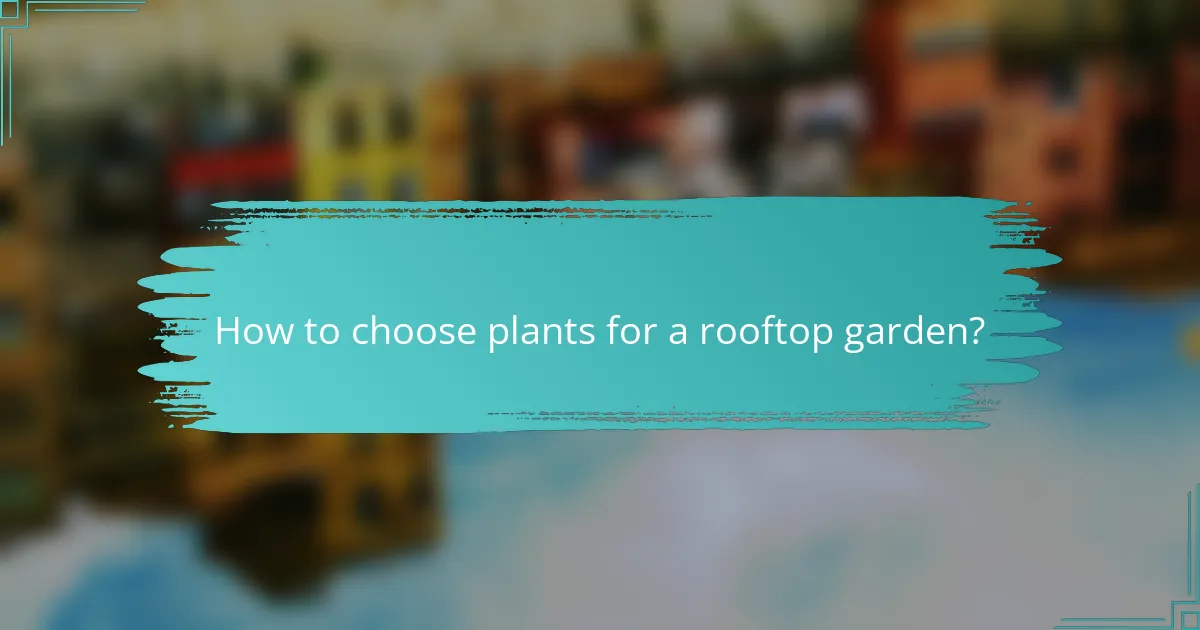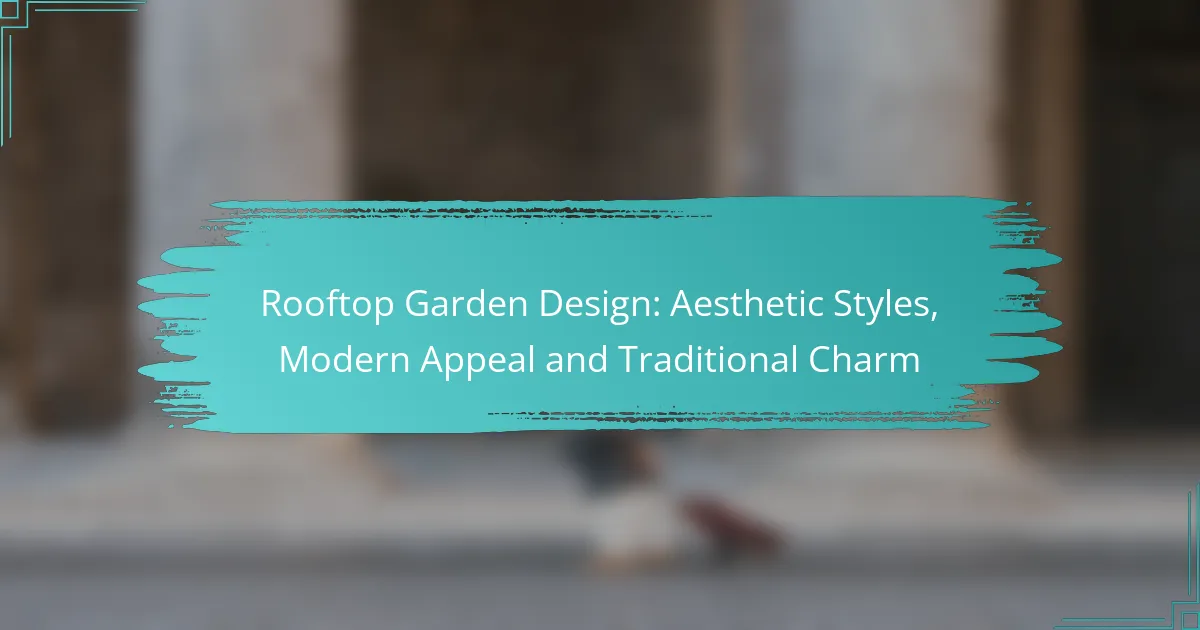Rooftop garden design offers a unique opportunity to blend aesthetic styles with functionality, transforming urban spaces into vibrant green retreats. From modern minimalist designs that emphasize sleek lines and innovative materials to traditional gardens that evoke classic charm, each style provides distinct visual appeal and benefits. By thoughtfully integrating plants and architectural elements, these gardens can enhance both the beauty and sustainability of city living.

What are the best rooftop garden design styles in urban areas?
The best rooftop garden design styles in urban areas blend aesthetics with functionality, creating green spaces that enhance the urban environment. Popular styles include modern minimalist, traditional English, contemporary tropical, eclectic urban jungle, and Zen-inspired retreats, each offering unique benefits and visual appeal.
Modern minimalist design
Modern minimalist design focuses on simplicity and clean lines, often utilizing a limited palette of materials and plants. This style emphasizes open spaces, allowing for easy movement and a sense of tranquility amidst the urban landscape.
To achieve a minimalist rooftop garden, consider using a few large planters with carefully selected plants, such as succulents or ornamental grasses. Incorporating furniture with sleek designs and neutral colors can further enhance the minimalist aesthetic.
Traditional English garden style
The traditional English garden style evokes a sense of nostalgia and charm, characterized by lush greenery, colorful flowers, and structured layouts. This style often includes elements like hedges, pathways, and classic garden furniture.
To create a traditional English rooftop garden, use a mix of perennials and annuals, such as roses and lavender, along with rustic seating areas. Consider incorporating trellises or arbors to add vertical interest and support climbing plants.
Contemporary tropical oasis
A contemporary tropical oasis brings a vibrant, lush feel to urban rooftops, featuring a variety of tropical plants and bold colors. This style often includes elements like water features and comfortable seating areas to create a relaxing atmosphere.
When designing a tropical rooftop garden, choose plants such as palms, ferns, and hibiscus. Incorporate bright cushions and outdoor rugs to enhance comfort and style, making the space inviting for relaxation or social gatherings.
Eclectic urban jungle
The eclectic urban jungle style embraces a mix of plants, textures, and colors, creating a lively and dynamic rooftop garden. This approach allows for creativity and personalization, making each space unique.
To achieve an eclectic look, combine various plant types, including hanging plants, large leafy greens, and flowering varieties. Use mismatched furniture and decorative elements to enhance the vibrant atmosphere, ensuring the space reflects your personal style.
Zen-inspired rooftop retreat
A Zen-inspired rooftop retreat focuses on tranquility and mindfulness, incorporating elements that promote relaxation and peace. This style often features natural materials, water elements, and carefully selected plants to create a serene environment.
For a Zen rooftop garden, consider using bamboo, stones, and water features like small fountains. Incorporate seating areas with cushions or mats for meditation, and choose plants that require minimal maintenance to maintain a peaceful atmosphere.

How to create a rooftop garden with modern appeal?
To create a rooftop garden with modern appeal, focus on minimalist design, innovative materials, and smart technology. This approach not only enhances aesthetics but also maximizes functionality and sustainability.
Utilize sleek materials
Choosing sleek materials is essential for achieving a modern look in your rooftop garden. Consider options like glass, metal, and concrete, which offer clean lines and a contemporary feel. These materials are durable and can withstand outdoor conditions while maintaining their appearance.
Incorporate features such as metal planters or glass railings to create a seamless integration with the urban environment. Using a limited color palette, such as monochromatic tones, can further enhance the modern aesthetic.
Incorporate smart technology
Integrating smart technology into your rooftop garden can significantly enhance its appeal and functionality. Consider installing automated irrigation systems that adjust based on weather conditions, ensuring plants receive optimal care without manual effort.
Additionally, smart lighting can set the mood for evening gatherings while conserving energy. Look for systems that allow you to control lighting and watering through a smartphone app, providing convenience and efficiency.
Focus on open space
Maximizing open space is crucial for creating a modern rooftop garden that feels expansive and inviting. Avoid overcrowding with too many plants or furniture; instead, opt for a few statement pieces that draw the eye.
Designate areas for relaxation or socializing, such as a lounge with comfortable seating or a dining space. Using modular furniture can allow for flexibility, enabling you to rearrange the space for different occasions while maintaining an airy atmosphere.

What are the key elements of traditional rooftop garden charm?
Traditional rooftop garden charm is characterized by a blend of classic design elements, plant selections, and inviting spaces that create a serene outdoor retreat. Key components include carefully chosen plants, architectural features that reflect historical styles, and cozy seating arrangements that encourage relaxation.
Classic plant selections
Classic plant selections for traditional rooftop gardens often include herbs, flowering plants, and small trees that evoke a sense of nostalgia. Popular choices are lavender, rosemary, and boxwood, which not only add beauty but also fragrance and texture. Consider using native plants that thrive in your local climate to ensure sustainability and ease of maintenance.
Incorporating seasonal flowers can enhance the garden’s aesthetic throughout the year. For instance, tulips and daffodils in spring, followed by summer blooms like roses and daisies, can create a vibrant display. Aim for a mix of perennials and annuals to maintain visual interest.
Architectural features
Architectural features play a crucial role in establishing the charm of a traditional rooftop garden. Elements such as trellises, arbors, and pergolas can provide structure and shade while enhancing the garden’s visual appeal. These features can be adorned with climbing plants like wisteria or clematis, adding vertical interest.
Consider using natural materials like wood and stone to create pathways, raised beds, or seating areas. These materials not only blend well with the garden’s aesthetic but also withstand outdoor conditions. Ensure that any structures comply with local building regulations to avoid potential issues.
Cozy seating arrangements
Cozy seating arrangements are essential for creating an inviting atmosphere in a traditional rooftop garden. Opt for comfortable furniture made from weather-resistant materials, such as teak or aluminum, that can withstand the elements. Cushions in warm, earthy tones can enhance comfort and style.
Incorporate small tables for drinks or snacks, and consider adding a fire pit or outdoor heater for cooler evenings. Arrange seating to encourage conversation and relaxation, positioning it to take advantage of views and sunlight. Avoid overcrowding the space to maintain a sense of openness and tranquility.

What factors should be considered in rooftop garden design?
Key factors in rooftop garden design include weight and structural integrity, sunlight and shade patterns, and effective water drainage solutions. Each of these elements plays a crucial role in ensuring the garden is both functional and aesthetically pleasing while maintaining the safety and stability of the building.
Weight and structural integrity
When designing a rooftop garden, it’s essential to assess the weight capacity of the building’s structure. This includes considering the weight of soil, plants, and any additional features like furniture or water elements. A structural engineer can help determine the load-bearing capacity to avoid potential damage.
Generally, a rooftop garden should not exceed a weight of around 15-20 kg per square meter, including all components. If the weight exceeds this range, reinforcement may be necessary to ensure safety and compliance with local building codes.
Sunlight and shade patterns
Understanding sunlight and shade patterns is vital for plant selection and placement in a rooftop garden. Different plants have varying light requirements, so observing how sunlight moves across the rooftop throughout the day can help in creating an optimal environment.
Consider using a sun calculator or shadow analysis tools to determine which areas receive full sun, partial shade, or full shade. This information will guide you in choosing appropriate plants that thrive in the specific light conditions of your rooftop.
Water drainage solutions
Effective water drainage is crucial in rooftop garden design to prevent water accumulation, which can lead to structural damage. Implementing a proper drainage system, such as a sloped surface or drainage mats, will help direct excess water away from the building.
Additionally, consider using lightweight soil mixes that enhance drainage and reduce overall weight. Regular maintenance, including checking drainage systems for blockages, is essential to ensure long-term functionality and health of the rooftop garden.

How to choose plants for a rooftop garden?
Choosing plants for a rooftop garden involves considering factors such as climate, sunlight, and weight capacity. Selecting the right plants ensures a thriving garden that enhances both aesthetics and functionality.
Consider local climate
Understanding your local climate is crucial when selecting plants for a rooftop garden. Different plants thrive in varying temperature ranges, humidity levels, and seasonal conditions. For instance, regions with hot summers may require drought-resistant plants, while cooler areas might benefit from hardy perennials.
When assessing your climate, take note of the USDA Plant Hardiness Zone for your area. This classification helps identify which plants are likely to survive and flourish. Additionally, consider microclimates created by your rooftop’s exposure to wind, sun, and shade, as these can significantly impact plant health.
Choose plants that are well-suited to your specific climate conditions. For example, succulents and native grasses are often ideal for warmer climates, while ferns and shade-tolerant flowers may be better for cooler or shadier rooftops.
